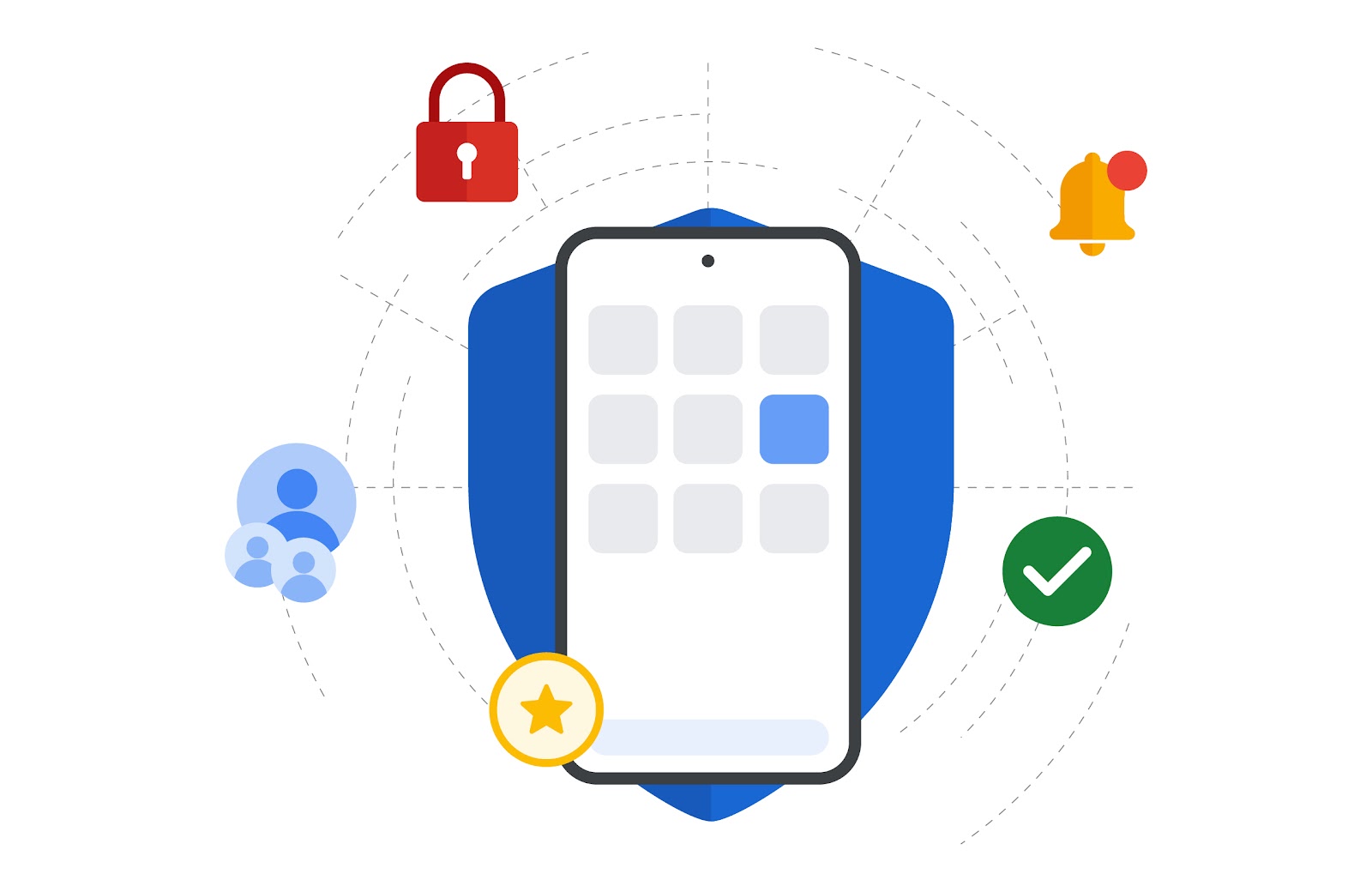What is Mobile Appdefense and Why Every App Needs it in 2025

In 2025, mobile applications are under increased security threat due to advanced attacks and data breaches. Mobile AppDefense provides such a solution, monitoring, detecting, and mitigating vulnerabilities in real-time before they can exfiltrate user data or corrupt application integrity. It strengthens apps against the evolving threats by incorporating protection into the development, deployment, and runtime environments, making them reliable and trustworthy in a rapidly growing unfriendly digital environment.
The evolving landscape of mobile security threats
In 2025 mobile environment offers a dynamic landscape of security issues to application developers and users. Attackers apply highly privileged methods, including code injection, binary manipulation, and side-channel attacks, to abuse native and cross-platform frameworks. Furthermore, the extensive deployment of edge computing and 5G connectivity increase the attack surface area, making applications vulnerable to network-level attacks and data interception. Mobile AppDefense provides a solution to these issues with layered protection controls specific to mobile risks.
It uses static and dynamic analysis to detect malicious code injected at third-party library integration points or at runtime exploitation efforts. Moreover, its behavioral monitoring features alert on abnormal patterns that may represent zero-day exploits or privilege escalation. Mobile AppDefense maintains application resilience by proactively predicting new threats and constantly evolving defense rules to protect against known and zero-day attack vectors. This holistic strategy minimizes the exploitation window and enhances the overall security posture of mobile applications running in progressively aggressive environments. It is responsive.
Also Read – eCryptobit .com
Key features of mobile appdefense
Mobile App Defense is built on a few fundamental capabilities that protect applications throughout their lifecycle. First, code integrity verification validates digital signatures and marks unauthorized changes to make sure that devices run only trusted binaries. Second, runtime shielding applies memory protections and secures sensitive data, live code-injection, and replay attacks. Anomaly detection uses machine-learning models to examine application behavior, compare it against baseline operations, and generate real-time alerts. Furthermore, secure key management creates isolation of encryption keys in hardware-based modules, inaccessible to malicious parties.
Logging and reporting modules capture security events and offer practical insights to developers and security teams to perform forensic analysis. Lastly, the threat-intelligence feeds and constant updating enables the defense structure to react rapidly to newly identified vulnerabilities and malware types. This combination of features provides an overall security position with Mobile AppDefense that can adapt to the changing threat landscape and minimize the possibility of a successful attack on a modern mobile application.
Embedding appdefense in app development process
Security should be incorporated throughout the development cycle to mitigate expensive repairs and exploits. Mobile AppDefense can facilitate a shift-left model by offering plugins and extensions to popular development IDEs and CI/CD pipelines. Automated code scans and vulnerability checks can be executed by developers on every build, and security gates can prevent the release of code that does not comply with established defense standards. This embedding supports collaboration between development, security, and operations teams, also referred to as DevSecOps, by inserting security tests within unit and integration tests.
This has resulted in vulnerabilities being identified prior to deployment and remediation being performed within the same sprint, hastening release cycles without sacrificing safety. Also, sandboxed test environments reproduce real-world attack conditions, where defense mechanisms are verified against simulated threats. When Mobile AppDefense is integrated into the app build process, organizations are able to reduce risk, increase code quality, and ensure security standards are consistent across multiple teams and platforms, all of which drive the total cost and time to market down.
Real-time protection and incident response
Mobile applications have to protect against live threats and zero-day vulnerabilities once they are deployed. Mobile AppDefense offers real-time defense with always-on monitoring agents integrated into every instance of an app. These agents monitor API calls, memory access patterns, and network transactions and compare them to known safe baselines. In case of anomaly detection, e.g., an abnormally high frequency of file writes or an unexpected network endpoint, the system will immediately quarantine suspect processes and notify administrators.
Incident response processes can then invoke rollback processes or dynamic configuration changes, isolating compromised modules without completely taking the application down. Extensive audit logs reproduce all security events in context, providing quick root-cause analysis and compliance reporting. Meanwhile integrated threat-intelligence services will distribute updates on new malware and exploit methods, enabling applications to defense themselves in real time. This leads to organizations having detection-to-response times of virtually zero, limiting the damage caused and keeping user trust intact, as security incidents are handled quickly and openly.
Ensuring compliance and data protection
Contemporary compliance requires stringent data security and clear security procedures. Mobile AppDefense can assist apps in achieving international compliance regulations, including GDPR, HIPAA, and PCI DSS, through the reinforcement of encryption, access controls, and audit trails. Modules providing data-at-rest and data-in-transit encryption ensure that unauthorized parties cannot access the modules, and a fine-grained permission control ensures that modules are only granted the required privileges. Detailed logging records all access attempts whether valid or invalid to facilitate compliance audits.
Forensic capabilities would allow to quickly identify compromised data and affected users in case of a breach, simplifying the mandatory notification procedures. Also, privacy-by-design principles inform secure processing of personal data, with minimal collection and retention of such data as regulatory policies dictate. Combining these safeguards, Mobile AppDefense can secure user privacy, minimize regulatory risk and potential penalties, and offer a clear audit trail, all whilst showing due diligence to security best practices in an age of severe compliance requirements.
Evaluating appdefense impact and emerging innovations
To continuously improve, it is essential to measure the effectiveness of security measures. Mobile AppDefense will offer dashboards and metrics to monitor defended attack attempts, blocked exploits, and mean time to detection and response. These insights assist security teams in calculating ROI by matching lower numbers of incidents to decreased remediation expenses and higher uptime. Protective measures do not adversely affect performance or usability, which is enforced by user experience metrics.
In the future, new developments, including AI-based threat forecasting, decentralized trust systems, and integration with secure enclave technology, are expected to provide additional benefits to app resilience. With attackers moving to adaptive methods, AppDefense advances with predictive analytics and threat-sharing networks. Organizations can guarantee that their mobile apps will be resilient and reliable against dynamic threat environments by being data-driven in security assessment and welcoming to future improvements.
Conclusion
Mobile AppDefense is a strategic bet on the security and stability of mobile apps in 2025. It actively prevents advanced threats by incorporating layered defense controls during development, deployment, and execution phases, thus supporting compliance with regulatory frameworks. Solutions like Doverunner play a key role in this ecosystem, offering robust anti-piracy and runtime protection capabilities that strengthen overall defenses. End-to-end monitoring, real-time incident resolutions, and constant innovation together secure user data and keep trust. Each contemporary application enjoys the deployment of Mobile AppDefense, with tools like Doverunner forming a critical layer in a comprehensive security approach.






